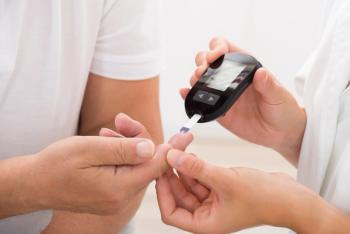
- Drug Topics July 2018
- Volume 162
- Issue 7
Why Pharmacists Should Be in a Primary Care Setting
A study has found that pharmacists in primary care networks can help lower A1c levels.
Clinical pharmacists who provide comprehensive medication management (CMM) services in primary care networks (PCNs) are helping diabetic patients meet therapeutic goals.
A study at UC Davis Health System PCN, which is made up of 13 patient-centered medical homes (PCMHs), revealed that adding pharmacists to these care settings helped achieve target A1c rates, and improved blood pressure and adherence rates among patients taking statins. The
Jarred Prudencio, PharmD, the lead author, says the goal of the study was to see if pharmacists in those settings can improve patient outcomes. Although a pharmacy presence is strong at UC Davis ambulatory clinics, that wasn’t the case in the PCN before the study.
“It’s hard to justify a pharmacist’s salary in a patient-centered medical home because we’re not able to bill it. We needed to prove that with a pilot project. We were able to fund two pharmacists where the outcomes were going to be good enough to justify expanding to the rest of the clinics,” he tells Drug Topics.
Prudencio, assistant professor of pharmacy practice at the University of Hawaii in Hilo, says that there was a lot of support for CMM in the PCMHs. “But there was nothing really comparing a good comparison group before and after adding a pharmacist. We thought that because of the way that our network was set up, we’d be able to have as close of a real control group as possible.”
How it Works
The pharmacists connect with patients through an outreach list or from referrals from primary care physicians. In a 40-minute care appointment with patients in the clinic, they conduct medication record reviews to optimize medications and assess adherence. They then conduct motivational interviewing, diet and exercise counseling, and implement their plan.
The pharmacists have a collaborative practice agreement that allows them to change medication regimens and order labs without discussing it with the physician. “From a unique perspective, pharmacists are able to drive home specific details and optimize medications,” Prudencio says. Having the time to communicate with patients, getting them to understand their condition, and why they’re being prescribed certain drugs, makes a big difference, he adds.
A Growing Trend
Prudencio says that although it’s still not widespread, pharmacists are playing a greater role in primary care settings. “We’re really pushing interprofessional education, so the physicians who are coming out of residencies are used to being trained alongside clinical pharmacists, they know that pharmacists are well trained.”
He predicts that as PCMHs move toward pay-for-performance reimbursement, more will utilize pharmacists to help satisfy value-based metrics.
Under a fee-for-service model, the only way to receive payment for pharmacist services is to bill under “incident to physician-billing codes,” Prudencio says, where reimbursement rates are very low and not enough to justify the salary of a pharmacist.
Articles in this issue
over 7 years ago
Pediatric Problems, and How Pharmacists Can Solve Themover 7 years ago
Pharmacogenomics and the Future of Pharmacyover 7 years ago
Will 340B Cuts Affect Clinical Outcomes?over 7 years ago
The 3 Keys to a Successful Genetic Testing Programover 7 years ago
Pharmacists, It’s Time to Speak UpNewsletter
Pharmacy practice is always changing. Stay ahead of the curve with the Drug Topics newsletter and get the latest drug information, industry trends, and patient care tips.





















































































































































